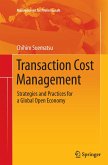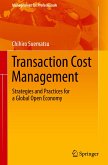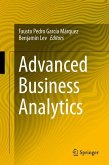The actual organization and use of information systems in American, European and Japanese firms are investigated and compared with theoretical conclusions. Finally, following the experimental evolution of the information products over the past twenty years, the results presented indicate that information and communication firms are now starting to offer the kind of business information systems predicted by the analysis.
The transformation of business information systems technology can be followed in the Chronicle, which is provided on diskette and which covers the development of modern IT and telecommunications industries. The data are arranged to allow researchers to reconfigure the data according to their own needs.
Hinweis: Dieser Artikel kann nur an eine deutsche Lieferadresse ausgeliefert werden.
The transformation of business information systems technology can be followed in the Chronicle, which is provided on diskette and which covers the development of modern IT and telecommunications industries. The data are arranged to allow researchers to reconfigure the data according to their own needs.
Hinweis: Dieser Artikel kann nur an eine deutsche Lieferadresse ausgeliefert werden.
From the reviews:
"In the book ... Gunnar Eliasson further develops his theory of the role and structure of firms operating in the experimentally organized economy (EOE). Eliasson's concept of the firm as an experimental machine within his construct of the EOE offers an important contribution to the theory of the firm. ... this book offers economists a unique model of human organization into business firms as a response to fundamental uncertainty and limited human capacity." (Adam Kaufman, Journal of Economic Behavior and Organization, Vol. 60, 2006)
"In the book ... Gunnar Eliasson further develops his theory of the role and structure of firms operating in the experimentally organized economy (EOE). Eliasson's concept of the firm as an experimental machine within his construct of the EOE offers an important contribution to the theory of the firm. ... this book offers economists a unique model of human organization into business firms as a response to fundamental uncertainty and limited human capacity." (Adam Kaufman, Journal of Economic Behavior and Organization, Vol. 60, 2006)








